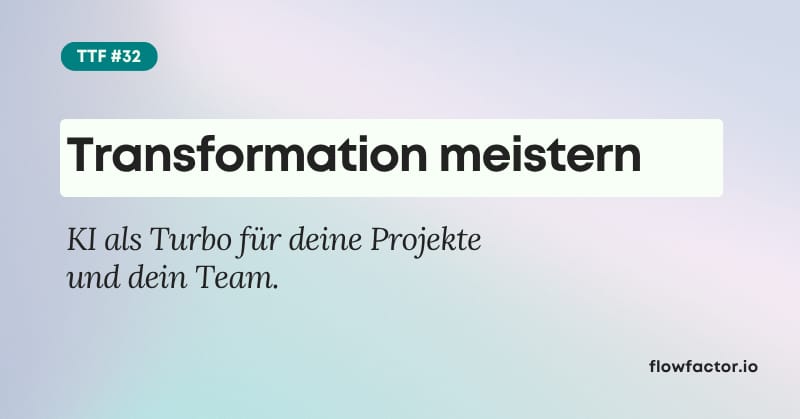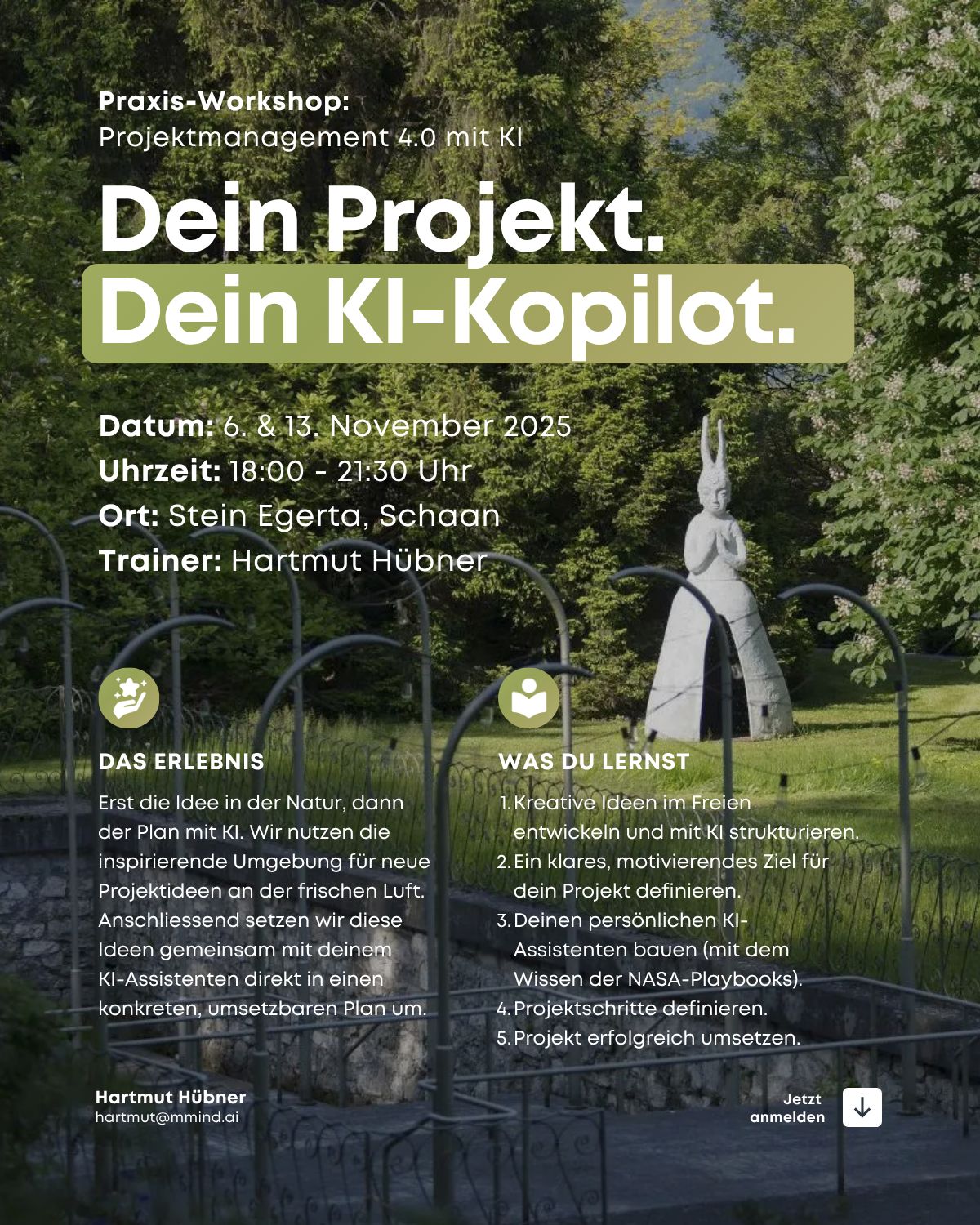
We are currently experiencing a technological leap that is causing many managers to sleep uneasily.Artificial intelligence is no longer a dream of the future: Employees are experimenting privately with ChatGPT, competitors are building digital colleagues, and regulatory authorities are imposing new requirements.For SMEs, this is both an opportunity and a risk.Those who wait and see will fall behind; those who invest into the blue risk pilot fatigue.In this issue, we show you how to take advantage of the storm: with a clear plan that empowers people, creates structures and gets you to your goal faster.
🎙️ You prefer to listen? Here's a short, AI-generated audio summary of this issue:
AI in SMEs: Achieving impact quickly - easy wins, 90-day plan and the new rules for consulting
Why now?
-
Employees are ready - management hesitates. A McKinsey survey of around 3,600 employees and 238 C-level executives shows: Almost all companies are investing in AI, but only 1 % of executives consider their organization to be "mature", i.e. to the point where AI is integrated into workflows across the board. The biggest obstacle is not the workforce, but a lack of leadership.
-
Board-level competence becomes mandatory. Norway's sovereign wealth fund (NBIM) demands that board members understand where and how AI is used. "Competence building at board level" and a clear AI policy are necessary in order to be able to assess opportunities and risks.
-
The world of work in transition. The Microsoft Work Trend Index 2025 shows that companies are reckoning with "frontier firms": Teams of people and agents where every task has a digital colleague. 82 % of executives see now as the time to rethink strategy and operations; 81 % plan to integrate agents into their AI strategy in the next 12-18 months.
These trends show: The pilot phase is over. The task now is to anchor the technology in the company with clear leadership, competencies and specific projects.
The digital transformation is not a sure-fire success, nor is it purely a question of technology.
It succeeds when you bring together three elements: committed people, concrete use cases and a clear architecture of rituals and rules. Ambassadors arouse curiosity and share experiences, simple basics create a common foundation and peer exchange ensures that good ideas have an impact throughout the company.With this structure - and the willingness to take small, repeatable steps - measurable results can certainly be achieved in a quarter.
The 90-day plan for your AI transformation
1. select ambassador
-
Looking for colleagues with Curiosity and influence. Give them about 2 hours per week and a simple target architecture: one clear KPI, one first agent, one live use case per team.
-
Week 1: Kick-off with the management. Define goals and metrics (time savings, error rate, user NPS). Create a simple agent register (owner, purpose, data sources, risks).
2. compulsory basics for all (60-90 minutes)
-
Short onboarding nuggets (security, data protection, prompt best practices) create a common language and reduce fear of contact.
-
Spread over two weeks, ideally as 30-minute impulses. NBIM uses mandatory 30-minute modules to anchor basic knowledge.
3. exchange every 2 weeks
-
Three groups: z.e.g. sales, operations, back office. Each group meets every 14 days for 45 minutes.
-
Agenda: demonstrate a use case, share a template, report a metric. This creates a living library and motivation through role models.
4. build agents & create governance (week 7-10)
-
Build simple internal agents (e.g. meeting digest, offer draft, weekly report). The new OpenAI AgentKit, for example, shows how platforms simplify agent construction.
-
Define guard rails: logging, release thresholds and data scopes. Use least-privilege access - the Norwegian sovereign wealth fund emphasizes responsibility and governance.
-
Weekly trade fair: hours saved, error rate, team satisfaction.
5. scaling & documentation (week 11-12)
-
Document best practices and prepare SOPs.
-
Finalize an "AI policy light" (do's & don'ts, rules for sensitive data, approval processes).
-
Plan the roadmap for the next quarter (budget, time for Ambassadors, new agents).
In this way, progress becomes measurable
-
Fewer status meetings, more real results (e.g. draft offers, reports).
-
Employees suggest new use cases on their own initiative.
-
The management receives weekly learning reports instead of isolated pilot information.
Practical example: NBIM as a role model
The Norwegian state fund (NBIM) shows what scaled AI implementation looks like: Employees receive short, mandatory training sessions (30 minutes) and can access powerful models. Throughout the company 40 AI ambassadors who support colleagues and share experiences. The team measures which tools are used and ensures that AI is understood as a "digital colleague". This combination of clear leadership, continuous learning and internal multipliers leads to measurable increases in efficiency.
Your next step: mastering projects with AI
An AI transformation has the character of a project. With Project management 4.0 with AI we offer a hands-on training in which you build your own AI assistant for projects of any size. The training includes:
-
Develop clear goals and precise plans: With AI, you can define project goals faster, create precise plans and structure tasks.
-
Generate meaningful reports: Automated, high-quality reports create transparency about progress, blockers and next steps.
-
Refresh methods: Our assistant knows both classic and agile approaches - but accelerates the process measurably.
When and where? On November 6 and 13, 2025, each from 18:00 - 21:30 in the Seminar Center Stein Egerta in Schaan. For the low price of CHF 195, there is a lot of practical knowledge and direct utility value.



